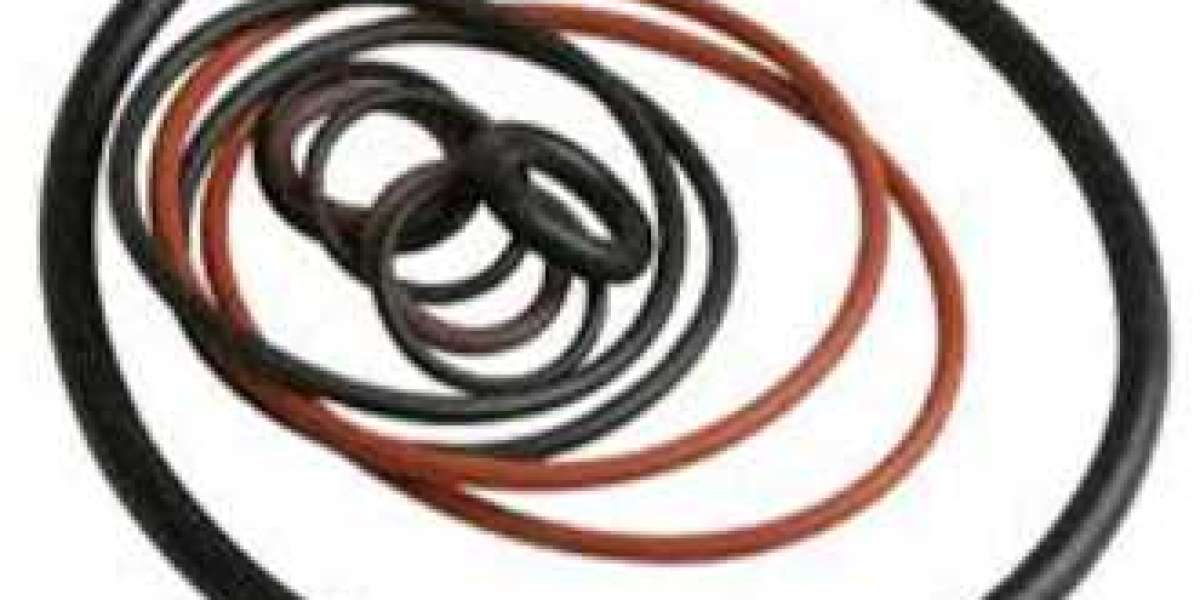While selecting an O-ring for your application, a lot of importance should be placed on the material of the seal being used. Since a proper sealing action is highly dependent on the condition of your O-ring, it is important that an O-ring material be chosen to best suit the operating environment of your application. Some of the common materials used to make O-rings are nitrile rubber or Buna-N, Viton(r), silicone rubber, neoprene, and PTFE or Teflon(r).
Choosing an O-ring material is dependent on a number of different factors, but two of the most critical factors are the operating temperature range that O-rings are subjected to and the different chemicals they may be exposed to. Some additional factors that play a role in the selection of an O-ring material include resistance to tearing and abrasion, and sunlight or aging. Since most O-ring materials react differently to diverse environments as well as chemicals, each material has its own advantages and disadvantages.
Nitrile Rubber:
One of the most common materials used to make O-rings is nitrile rubber or Buna-N, which is a synthetic rubber copolymer. This material has excellent resistance to water, hydraulic fluids, solvents, oils and other petroleum products. This feature, coupled with its operating temperature range of between -65 degrees F to +275 degrees F, has made nitrile rubber one of the most widely used elastomers to make O-ring seals. However, this material does have its limitations; nitrile is generally not recommended for applications where it might be exposed to sunlight and ozone, as well as certain chemicals, which include ketones, esters, and aromatic hydrocarbons. Furthermore, its susceptibility to ozone also makes it necessary that nitrile rubber seals are not stored near electric motors that normally generate ozone. Its high resistance to petroleum products and reasonable resistance to temperature has led to Nitrile rubber O-rings becoming the first choice for various applications in the automobile industry.
Silicone Rubber:
Silicone rubbers are a collection of elastomeric polymers produced from silicon, hydrogen, oxygen, and carbon. Silicones generally have poor resistance to abrasion and tearing, as well as low tensile strength plus high co-efficient of friction - features that make them unsuitable for dynamic sealing applications. However, its exceptional resistance to extreme temperatures, ranging from as low as -150 degrees F to as high as +500 degrees F, makes it ideal for applications where seals are exposed to high dry heats, as in automotive components and cookware.
Viton(r):
Viton(r) is another synthetic rubber commonly used for making O-ring seals, which is a type of FKM elastomer. This elastomer's excellent resistance to solvents and oils, as well as its resistance to broad operating temperature ranges, has made it a popular for use in a number of applications. Though its operating temperature ranges from -10 to +400 degrees F, seals made from this material are known to withstand temperatures as high as +600 degrees F for short times. This combination of properties makes Viton an ideal choice for high temperature applications as well as applications exposed to a variety of different fluids. One such application that has adopted Viton O-rings is SCUBA diving, where the O-ring seals are used in the diver's air tank. However, though Viton is compatible with most hydrocarbons, it is generally not compatible with ketones and organic acids.
PTFE:
One fluoropolymer commonly used to manufacture O-rings is PTFE, or Teflon(r), as it is commonly known. PTFE is one of the most chemically inert materials used to make O-rings and extremely resistant to oils, solvents, bases, acids, steam, and various other chemicals. Its unparalleled resistance to abrasion and tearing makes it ideal for dynamic sealing applications. However, there are few drawbacks to using PTFE O-rings. The first one is their inability to be compressed as effectively as other commonly used O-ring materials, which translates into inefficient sealing. The other major disadvantage of this material is its poor cold flow characteristics under constant strain. Still, its chemical resistance and low coefficient of friction has made it a popular sealing option in many valves and other applications.
Neoprene:
Neoprene is yet another synthetic rubber that is regularly used to makeO-ring seals. This elastomer is resistant to animal and vegetable fats, as well as most oils and solvents. However, O-ring seals made from this material are generally not recommended for applications that involve exposure to ketones, esters, aromatic hydrocarbons, and strong oxidizing acids.
Natural Rubber:
At present, natural rubber O-rings are rarely used due to the advent of synthetic elastomers, such as Nitrile rubber and Viton. Natural rubber can be used with animal oils, vegetable oils, and most oxidizing chemicals. However, it is not recommended for use with oils, petroleum solvents, aromatic hydrocarbons, and in applications that demand exposure to sunlight or ozone.
These listed materials are commonly used elastomers for making O-rings, but other materials, such as Kalrez, are also used in certain special applications. Kalrez is an ideal replacement for Viton in applications that have operating temperatures of up to 500 degrees F. Similarly, there are various other elastomers used for specific sealing purposes. Whatever the material you choose for your application, care should be taken to ensure its compatibility with operating temperatures, fluids, and environment.





